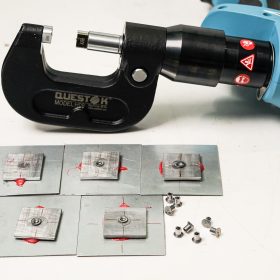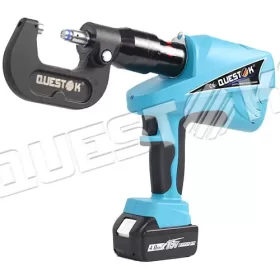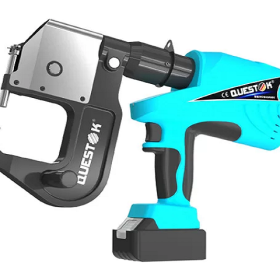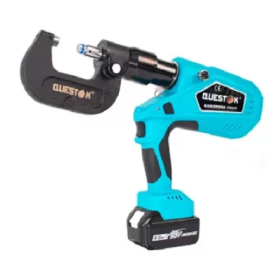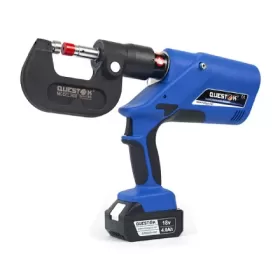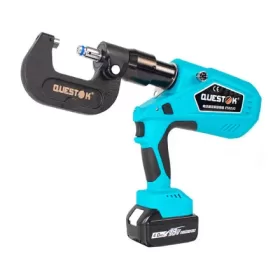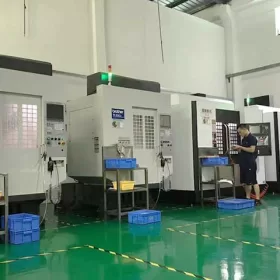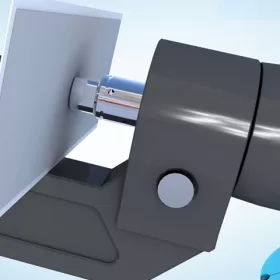The Benefits of Cold Riveting vs. Hot Riveting Techniques
Introduction
Riveting is a metalworking process that permanently joins two or more pieces of metal together. There are two main types of riveting: cold riveting and hot riveting. While both techniques have their own advantages and disadvantages, cold riveting generally has fewer disadvantages as it requires no heat and therefore does not compromise the strength of the joined materials.
Advantages of Cold Riveting
No Heat Damage
Unlike hot riveting, cold riveting does not require the application of heat to the metal, which eliminates the risk of heat damage. Heat can compromise the strength of the metal and can also cause warping. Cold riveting avoids these issues by using pressure alone to form the rivet.
Increased Strength
Cold riveting actually increases the strength of the joined materials due to the work hardening that occurs during the riveting process. As the rivet is formed, the metal around it is compressed, which makes it stronger. Hot riveting, on the other hand, can weaken the metal around the rivet due to the annealing that occurs during the heating process.
Greater Flexibility
Cold riveting can be used to join a wider variety of materials than hot riveting. This is because cold riveting does not require the metal to be heated to a specific temperature, which can be difficult for some materials. Cold riveting can also be used in applications where space is limited, as it does not require the use of a forge or other heating equipment.
Disadvantages of Cold Riveting
Higher Force Requirements
Cold riveting requires more force than hot riveting to form the rivet. This can make it difficult to use cold riveting for thick or hard materials. Cold riveting also requires the use of a special riveting machine, which can be expensive.
Noise
Cold riveting can be noisy, as the process involves hammering the rivet into place. This can be a problem in applications where noise is a concern.
Advantages of Hot Riveting
Lower Force Requirements
Hot riveting requires less force than cold riveting to form the rivet. This makes it a good choice for thick or hard materials. Hot riveting also does not require the use of a special riveting machine, which can save money.
No Noise
Hot riveting is a quieter process than cold riveting, as it does not involve hammering. This makes it a good choice for applications where noise is a concern.
Disadvantages of Hot Riveting
Heat Damage
As mentioned earlier, hot riveting can damage the metal around the rivet due to the annealing that occurs during the heating process. This can weaken the joint and make it more susceptible to failure.
Shorter Rivet Life
Hot rivets have a shorter lifespan than cold rivets due to the heat damage that occurs during the riveting process. This is because the heat can cause the rivet to become brittle and more likely to fail.
Which Technique to Use?
The best riveting technique for a particular application depends on a number of factors, including the materials being joined, the strength requirements, the noise level, and the budget. Cold riveting is generally the better choice for applications where strength, durability, and flexibility are important. Hot riveting is a good choice for applications where noise is a concern or where the materials being joined are thick or hard.
- Company News
- Industry News
- Tag
- Tags
-
The Advantages of Questok Rivet Guns: Precision, Efficiency, and Durability
In industrial fastening applications, the choice of tools directly impacts productivity, safety, and long-term cost-effectiveness. Questok rivet guns have emerged as a standout solution for professionals across aerospace, automotive, and construction sectors. Combining advanced engineering with user-centric design, these tools deliver unmatched performance. Below are the key advantages that make Questok rivet guns a preferred choice:
-
Rivet Gun FAQ
Rivet Gun FAQ-SPR
-
Fast Assembly and Repair With Cordless Solid Rivet Gun
Questok cordless solid rivet gun stands out as a pivotal innovation, merging portability with power to facilitate efficient and effective fastening in a myriad of applications.
-
Redifine The Role of Self-piercing Riveting Gun Machine
Self-piercing riveting adopts high-speed mechanical fastening skill that joins thin sheet materials, typically steel and aluminum alloys.
-
The Latest Innovations in Clinching Tool Design
Explore the latest innovations in clinching tool design, redefining precision, efficiency, and versatility in material joining.
-
The Application and Maintenance of Self-Piercing Rivet Guns
Delve into the applications of self-piercing rivet guns in the automotive and aerospace industries and reveal the essential maintenance practices that ensure their accuracy and efficiency.
-
Rivetless Riveting Gun for Ventilation Duct Projects
The ventilation duct rivetless gun is a tool for riveting ventilation ducts without rivets.
-
Guide to Using Self-Piercing SPR Riveting Gun
In the automotive industry, self-piercing SPR (Self-Piercing Rivet) riveting guns are commonly used for joining metal components in vehicle bodies, including BMW vehicles.
-
Rivet Gun FAQ
Rivet Gun FAQ-SPR
-
Versatile Fastening- Applications of the Handheld Rivet Gun Across Industries
In the realm of fastening, the handheld rivet gun stands as a testament to ingenuity and versatility. Its ability to effortlessly join materials with sheer strength and permanence has revolutionized manufacturing and construction processes, leaving an enduring mark on diverse industries. Aerospace: Where precision and reliability are paramount, the rivet gun shines. In aircraft assembly, […]
-
Time-Saving Tools- Speeding Up Projects with Electric Blind Rivet Guns
In the whirlwind of project deadlines, every minute counts. But what if there was a tool that could dramatically reduce assembly time, giving you an edge in the race against the clock? Enter the electric blind rivet gun: your secret weapon for lightning-fast and effortless riveting. Electric blind rivet guns are the ultimate time-savers for […]
-
Streamlining Fastening- How an Electric Blind Rivet Gun Enhances Efficiency
Introduction In the realm of manufacturing and assembly, fastening plays a crucial role in securing components and ensuring structural integrity. Traditional manual rivet guns, while reliable, are often time-consuming and labor-intensive. The advent of electric blind rivet guns has revolutionized the fastening process, significantly enhancing efficiency and productivity. This article delves into the benefits of […]
-
The Role of Automation in Electric Rivetless Clinching
Electric rivetless clinching (ERC) is a lightweight joining process that eliminates the need for rivets or other fasteners. This can lead to significant cost savings and increased production efficiency. Automation plays a critical role in ERC, enabling high-speed and high-volume production. Automated Feed Systems Automated feed systems are used to accurately position the two workpieces […]
-
Why Choose a Universal Self-Piercing Riveting Gun for Your Projects?
In the realm of construction and fabrication, riveting guns stand as indispensable tools for creating secure and robust connections. Among the various types available, universal self-piercing riveting (SPR) guns have emerged as a game-changer due to their versatility and efficiency. This article will delve into the compelling reasons why choosing a universal self-piercing riveting gun […]
-
Why Choose Stainless Steel Hollow Rivets for Your Projects?
In the world of industrial manufacturing, choosing the right fasteners for your projects is crucial for ensuring longevity and reliability. Among the many options available, stainless steel hollow rivets stand out as a superior choice for a wide range of applications. This article delves into the compelling reasons why stainless steel hollow rivets are the […]
-
Top Trends in Electric Rivetless Clinching Guns
In the realm of fastening technology, electric rivetless clinching guns have emerged as a revolutionary solution for a wide range of industrial applications. These advanced tools offer several преимущества and capabilities, revolutionizing the way businesses approach their fastening needs. Adoption of Brushless Motors Brushless motors have gained significant traction in electric rivetless clinching guns due […]
